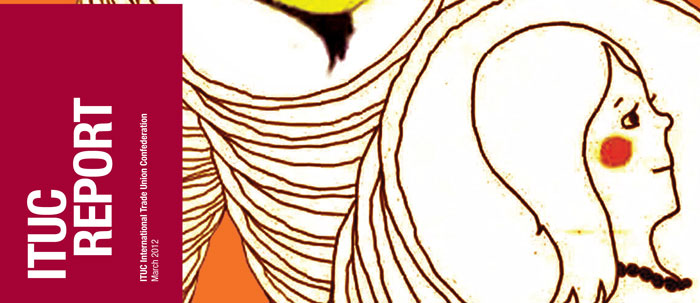A new report from the International Trade Union Confederation (ITUC) reveals that worldwide, women are paid 18% on average less than their male counterparts at work.
The report, “Frozen in time: Gender pay gap unchanged for 10 years” released on the eve of International Women’s Day, looks at women’s wages in 43 countries, twice the number of previous studies.
“For the last decade we have seen women’s wages hitting a road block. The pay gap remains frozen in time almost everywhere. Asia is the continent with the greatest wage differential between men and women with no progress made to close the gap for over a decade,” said Sharan Burrow, General Secretary, International Trade Union Confederation.
For the first time, researchers have ranked industries internationally by analysing the differences in wages in 15 sectors from construction to domestic workers. The report also includes detailed statistics from official sources in 18 countries.
“More unionised sectors such as the public sector tend to have lower pay gaps. Those with low unionisation rates and low wage levels, such as retail, hotels and restaurants as well as agriculture tend to have higher gaps. Part of the problem is that many workers are not paid a decent minimum wage,” said Sharan Burrow.
The report also found:
![]() Male dominated sectors such as construction have the smallest gender pay gaps due to the relatively low numbers of women, and the fact that the women tend to be better educated.
Male dominated sectors such as construction have the smallest gender pay gaps due to the relatively low numbers of women, and the fact that the women tend to be better educated.
![]() Domestic workers show the lowest level of earning and the largest gender pay gaps.
Domestic workers show the lowest level of earning and the largest gender pay gaps.
![]() The highest ‘unexplained gender pay gaps’ attributed to discriminatory practices are found in Chile, South Africa and Argentina.
The highest ‘unexplained gender pay gaps’ attributed to discriminatory practices are found in Chile, South Africa and Argentina.
![]() A ‘child penalty’ contributes to keeping women’s wages low, particularly affecting women aged 30 – 39.
A ‘child penalty’ contributes to keeping women’s wages low, particularly affecting women aged 30 – 39.
The report is the third study into the gender wage gap by the ITUC, following up on studies in 2008 and 2009.
The report was written by Dutch academics K.G Tijdens and M Van Klaveren and is based on country level wage data from the ILO, Eurostat as well as on individual-level wage data from the multi-country WageIndicator Foundation web survey. While previous ITUC reports show that official figures tend to underestimate the gender pay gap, data collection has improved in recent years, especially through the OECD and the EU.
See the report ‘Frozen in Time: Gender pay gap unchanged for 10 years” can be read here


